Forgotten oil and gas wells linger, leaking toxic chemicals
Rusted pipes litter the sandy fields of Ashley Williams Watt’s cattle ranch in windswept West Texas. Corroded skeletons are all that remain of hundreds of abandoned oil wells. Unable to produce any useful amounts of oil or gas, the wells were plugged with cement decades ago.
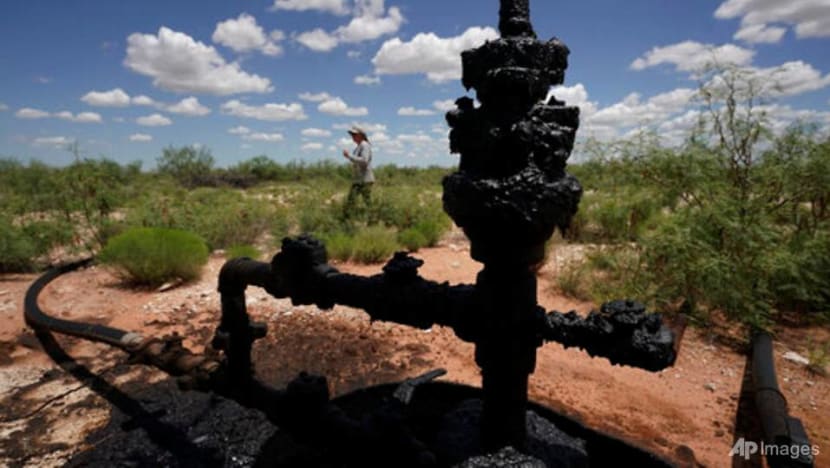
Ashley Williams Watt walks near a wellhead and flowline at her ranch, on Jul 9, 2021, near Crane, Texas. (Photo: AP/Eric Gay)
CRANE, Texas: Rusted pipes litter the sandy fields of Ashley Williams Watt’s cattle ranch in windswept West Texas. Corroded skeletons are all that remain of hundreds of abandoned oil wells. Unable to produce any useful amounts of oil or gas, the wells were plugged with cement decades ago.
But something eerie is going on beneath the land, where Watt once played among the mesquite trees and jackrabbits. The wells seem to be unplugging themselves. They’re leaking dangerous chemicals into her fields.
First she found crude oil bubbling from one abandoned well. Then an another well was seeping pools of produced water, a byproduct of oil and gas extraction containing toxic chemicals.
“I’m watching this well literally just spew brine water into my water table, and then I have to go home at night, and I’m sweaty and tired and smelly, and I get in the shower, and I turn on the shower and I look at it, and I think, is this shower going to kill me?” Watt said.
A GROWING THREAT
According to the Environmental Protection Agency, 3.2 million abandoned oil and gas wells exist in the United States. About a third were plugged with cement to prevent leaks. Most haven’t been plugged at all.
Many of the wells are releasing methane, a greenhouse gas containing about 86 times the climate-warming power of carbon dioxide over two decades. Some are leaking chemicals such as benzene, a known carcinogen, into groundwater.
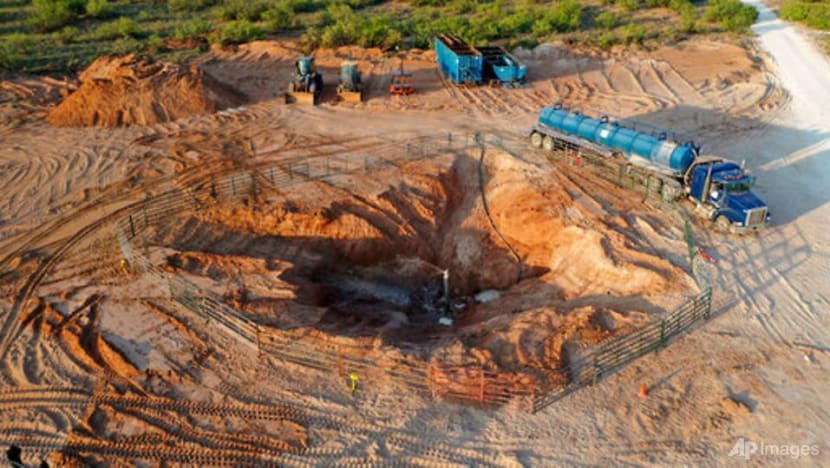
Regulators don’t know where hundreds of thousands of abandoned wells are because many were drilled before modern record-keeping and plugging rules were established. They are a silent menace, threatening to explode or contaminate drinking water.
In recent years, abandoned wells have been found on the Navajo Nation, where a hiker stumbled across wells oozing fluid that smelled like motor oil; in Colorado, where a basement exploded, killing two men after an abandoned flowline leaked methane; and in Wyoming, where a school shut down after air tests revealed high levels of benzene and carbon dioxide.
President Joe Biden wants to spend billions plugging the wells. But Congress is unlikely to allocate enough money to seriously confront the issue.
“If, all of a sudden, we could switch to all green renewable energy, that’s great, but these wells don’t disappear; they’re still going to be there,” said Mary Kang, an assistant professor at McGill University.
TRACES OF BENZENE
After the discoveries on Watt’s ranch, traces of benzene showed up in the well that supplies her cattle’s drinking water. Chevron, which owned two of the oil wells that recently came unplugged, began trucking in drinking water while its crews tried to fix the leaks. But Watt worried her animals might have consumed contaminated water. So she had her 600 head of cattle hauled off to another part of her ranch.
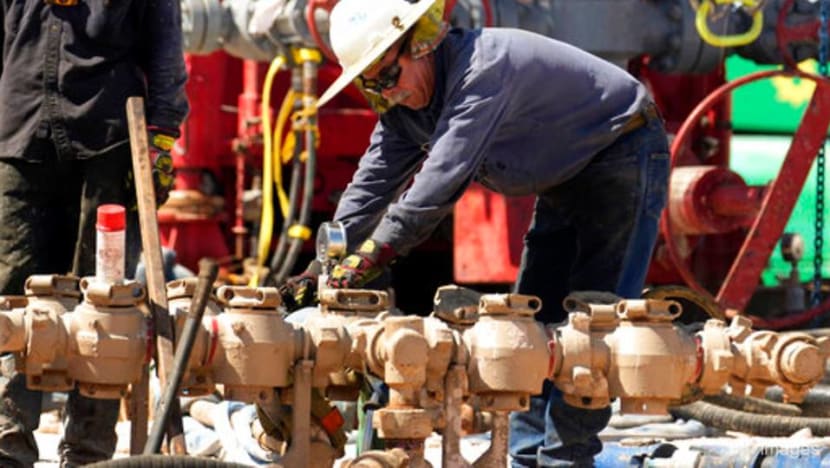
Though Chevron officials maintained that the cattle could safely return, Watt disagreed.
She’s haunted by a memory of crude oil bubbling up in a toilet bowl at her family’s ranch when she was a teenager. Horrified, they switched to another well, but never found the source of the leak.
Representatives for Chevron said the company is committed to re-plugging the two wells that recently sprang leaks.
But Watt fears additional wells are deteriorating, and Chevron doesn't plan to check its other wells. If Watt should inform Chevron of another leaking well, “if we have to take responsibility, we will and we’ll do the right thing by the landowner,” said Catie Mathews, a company spokeswoman.
Hailing from a long line of cattle ranchers, Watt never thought she’d be fighting this fight. She graduated from the US Naval Academy and worked in intelligence for the Marines. Even after she obtained an MBA from Harvard, she returned to the ranch.
“The story of my family,” Watt said, “is a story of land, if nothing else".
SEARCHING FOR LOST WELLS
The first successful commercial oil well in the US was drilled in Pennsylvania in 1859, but few detailed records survived that early oil boom.
Pennsylvania has located roughly 8,700 orphaned wells, mostly unplugged. Yet based on historical photos and surveys, Pennsylvania estimates between 100,000 and 560,000 additional unplugged wells around the state.
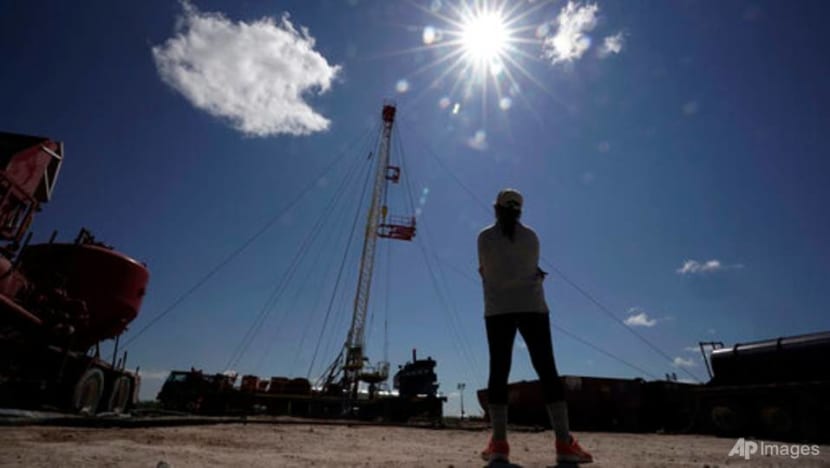
“We’re not plugging fast enough to keep up with the wells we’re discovering,” said Seth Pelepko, an environmental program manager in the Pennsylvania Department of Environmental Protection.
Some states have hired well hunters who use drones and metal detectors. On her Texas ranch, Watt found a dark patch of earth using a drone. The sand there is dark and reeks of oil. Watt’s worry is the water below. Without it, she and her longtime ranch foreman and his wife - and their cattle - can’t live here. Water is the lifeblood of this place and all of West Texas.
CLEANING UP THE MESS
In addition to polluting groundwater, the wells are accelerating global warming. Unplugged, abandoned wells in the US leaked 5,000 times more methane than plugged wells did, according to a study cited by the EPA.
Many states require companies to plug wells that are tapped out and to post bonds in case they go belly-up, but those bonds don't cover the cost. In 2018, oil-producing states spent US$45 million plugging orphaned wells, according to the Interstate Oil and Gas Compact Commission.
Wyoming and North Dakota channelled millions of dollars in federal coronavirus relief funds into plugging abandoned oil and gas wells.
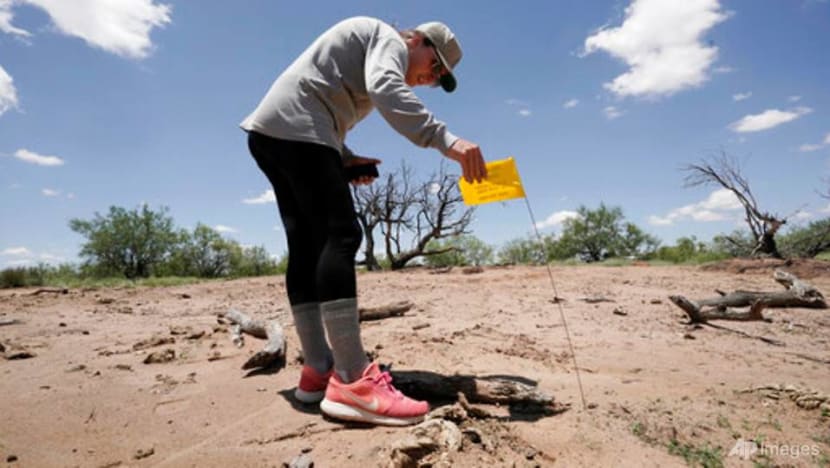
Watt suspects the rare cancer that killed her mother might have been related to wells leaking toxic chemicals on her ranch. She'll never know for sure. More than anything, she wants justice for the land, her cattle - and the legacy her family bequeathed to her. This is where she spread the ashes of her parents.
“My greatest fear when I lay down every night, even before this well became unplugged, is what if I do something to screw up the history of this ranch, that’s still being written?” Watt asked.
“What if that history ends with me?”










